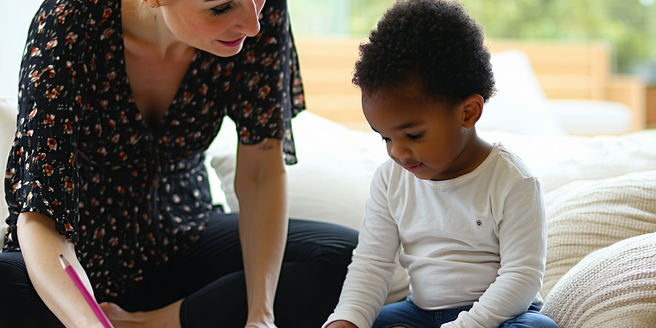
Understanding Art Therapy and Its Benefits
Art therapy is a form of psychotherapy that uses the creative process as a means of expression and healing. This approach is particularly beneficial for children, as it enables them to explore their thoughts and emotions in a non-verbal manner, making it easier for them to communicate complex feelings. At its core, art therapy empowers children to express themselves freely through various art forms, such as drawing, painting, or sculpture, which may lead to enhanced emotional resilience and self-awareness. Through guided sessions, trained therapists can help children interpret their creations, unlocking insights into their mental and emotional state. The benefits include improved social skills, reduced anxiety, and better coping mechanisms for handling stress. By providing a safe and supportive environment, art therapy encourages growth, healing, and personal development in young minds.
How Art Helps in Emotional Expression
Art serves as a vital tool in facilitating emotional expression, especially for children who may not yet possess the verbal skills to articulate their feelings. Creating art provides a safe space for them to externalize emotions that might otherwise remain hidden. This process allows for the exploration of themes such as happiness, anger, or sadness, without the pressure of finding the right words. As children engage in artistic activities, they often reveal insights about their emotional world through color choices, shapes, and forms. This non-verbal expression can be therapeutic, as it validates their feelings and provides an outlet for release. Art helps bridge the gap between feelings and communication, enabling children to gain a sense of control and understanding over their emotions. Recognizing these expressions, therapists and caregivers can better support children’s emotional wellbeing.
Techniques and Tools Used in Art Therapy
Art therapy incorporates a variety of techniques and tools tailored to individual needs. Depending on the child’s interest and therapy goals, different mediums like painting, drawing, or clay modeling can be employed. These techniques offer versatility, allowing for both structured and spontaneous expression. For instance, directive methods may include tasks like drawing a specific life event, while non-directive approaches might encourage free expression. Materials such as colored pencils, watercolors, or pastels cater to diverse sensory preferences, enabling children to experiment with textures and colors. Collage-making is another effective tool, encouraging creativity and reflection as children piece together images that reveal personal narratives. Furthermore, digital art tools have gained popularity, offering interactive and engaging platforms for expression. The choice of technique and tool is vital in facilitating a comfortable environment that nurtures creativity and healing.
Success Stories of Kids Thriving Through Art
Numerous success stories highlight the transformative impact of art therapy on children’s lives. For instance, a young child struggling with anxiety found solace in painting, gradually using vibrant colors to express newfound confidence and happiness. Another case involved a teenager coping with grief who created sculptures to symbolize her feelings, ultimately leading to emotional release and acceptance. In both cases, art therapy served as a catalyst for personal growth and healing. One touching story includes a child with autism who, through art, improved communication skills by depicting everyday experiences and emotions in drawings, enhancing social interaction and self-expression. These stories showcase how art therapy can unlock potentials by providing a platform for children to explore their identity, build resilience, and overcome challenges. Art becomes a powerful ally in their journey towards emotional and psychological wellbeing.
Integrating Art Therapy into Daily Routines
Incorporating art therapy into daily routines can significantly enhance children’s emotional and mental wellbeing. Simple activities, such as dedicating time each day for drawing or coloring, can be seamlessly integrated into a child’s schedule. Establishing an art corner at home, filled with various supplies like paints, papers, and crayons, encourages regular creative expression. Routine art sessions not only promote artistic skills but also serve as daily emotional check-ins, allowing children to express and process their emotions consistently. Caregivers can participate by setting aside time for family art projects, fostering a supportive environment. Additionally, sharing and discussing art creations can strengthen communication within families, offering insights into a child’s inner world. By making art a regular activity, parents and educators can create a nurturing space that facilitates emotional growth and resilience in children’s everyday lives.
Resources for Parents and Educators in Art Therapy
For parents and educators looking to explore art therapy, numerous resources are available to guide them. Books and articles on art therapy offer valuable insights into techniques and benefits, helping caregivers understand the methodology. Workshops and online courses provide hands-on experiences, equipping attendees with practical skills to implement art therapy confidently. Connecting with professional art therapists for consultations or support can also be beneficial, offering personalized strategies suited to specific needs. Educational institutions often offer art therapy programs and materials, making it easier to integrate art into the curriculum. Art kits designed for therapeutic use are readily available, providing structured activities for children. Online communities and discussion forums allow parents and educators to share experiences and advice. These resources collectively support the incorporation of art therapy into children’s lives, promoting emotional wellbeing and creative expression.
